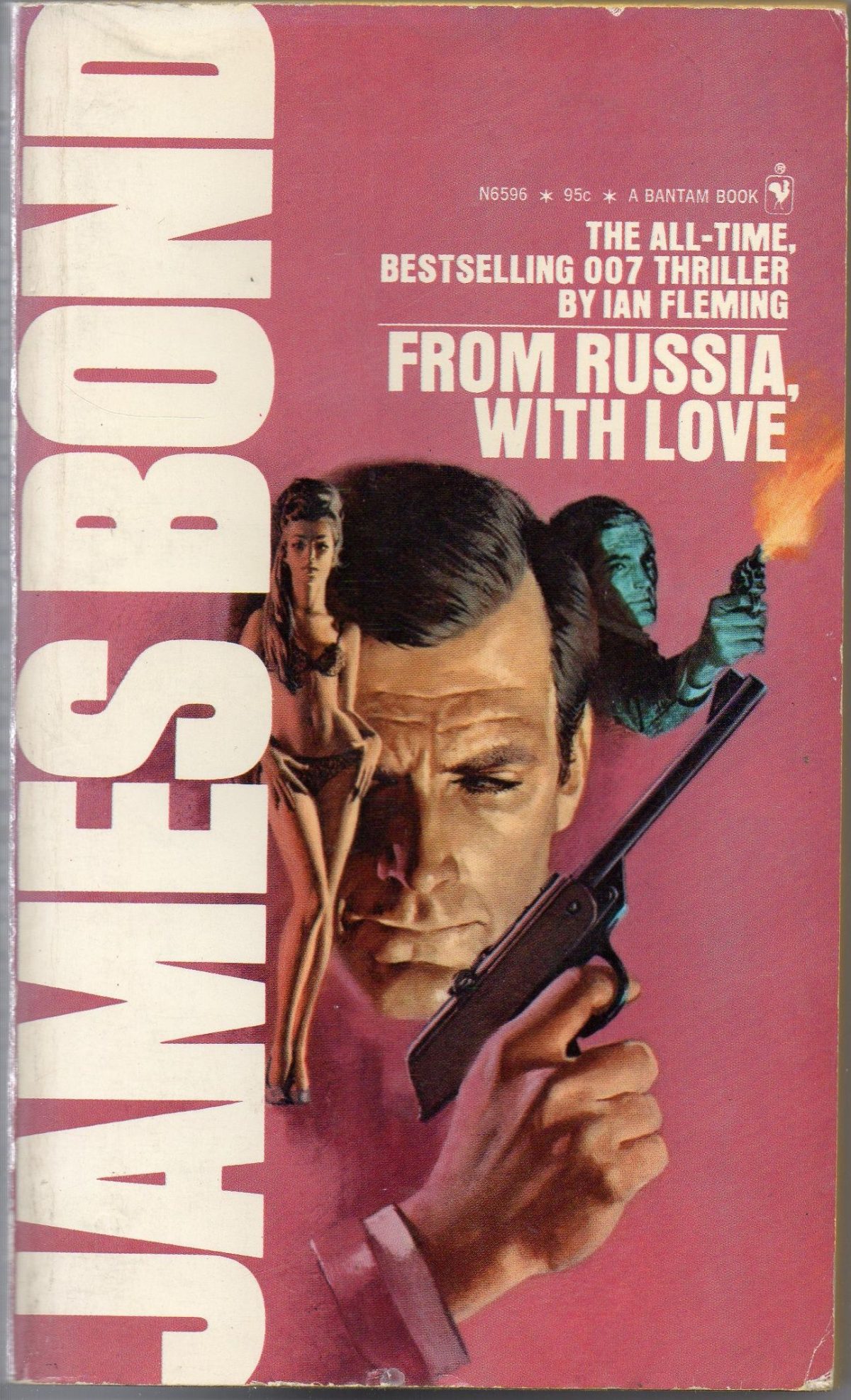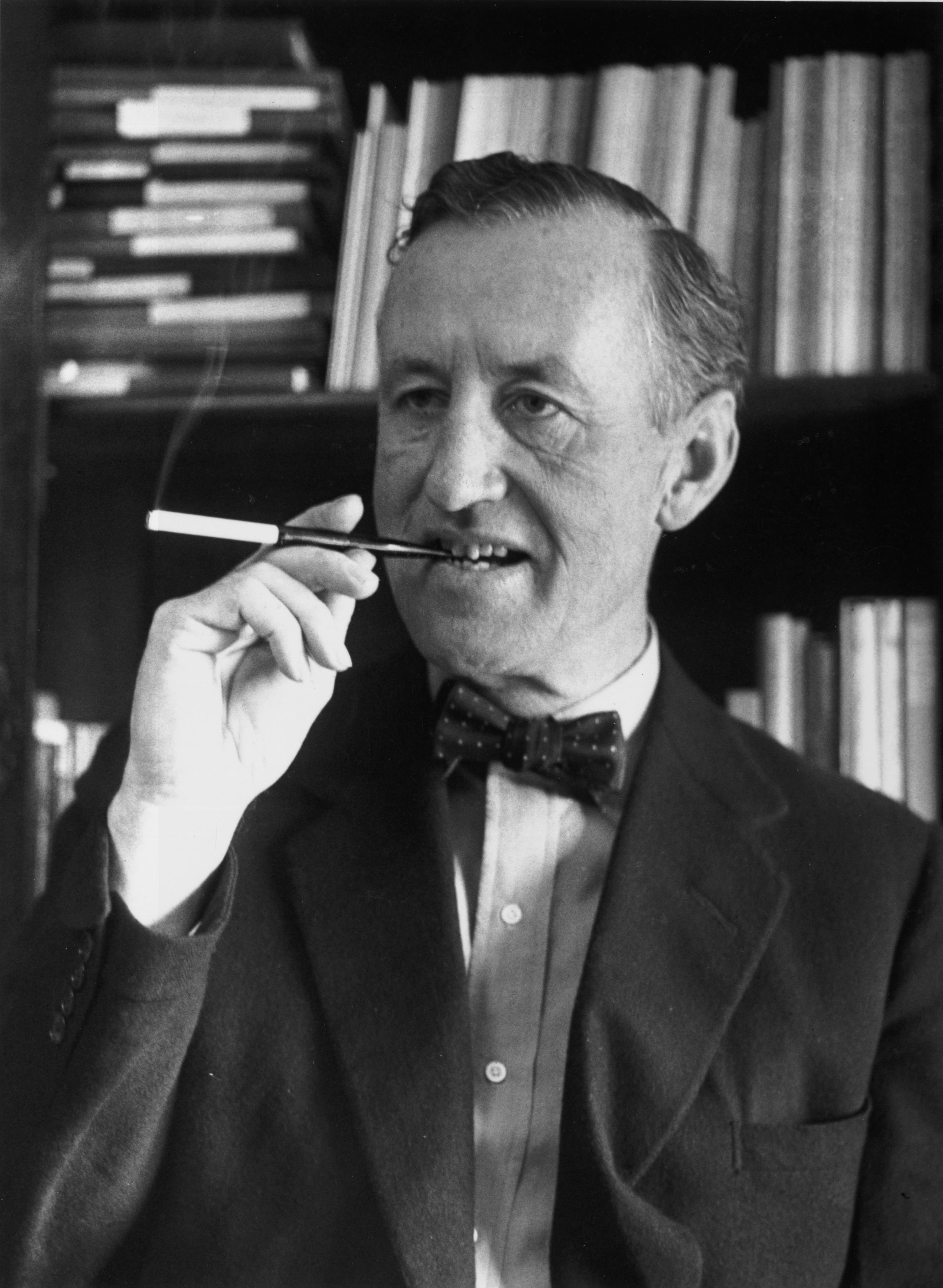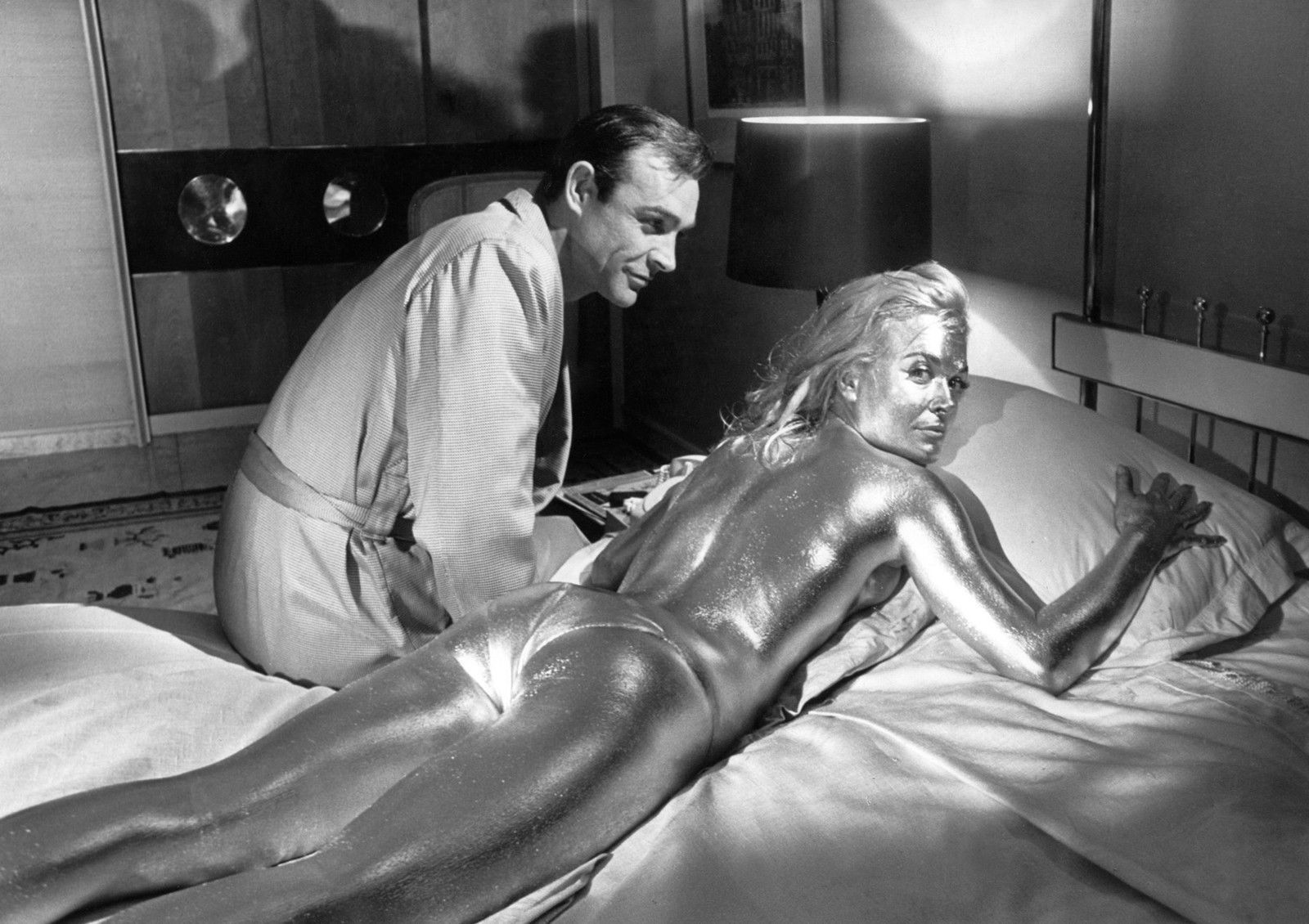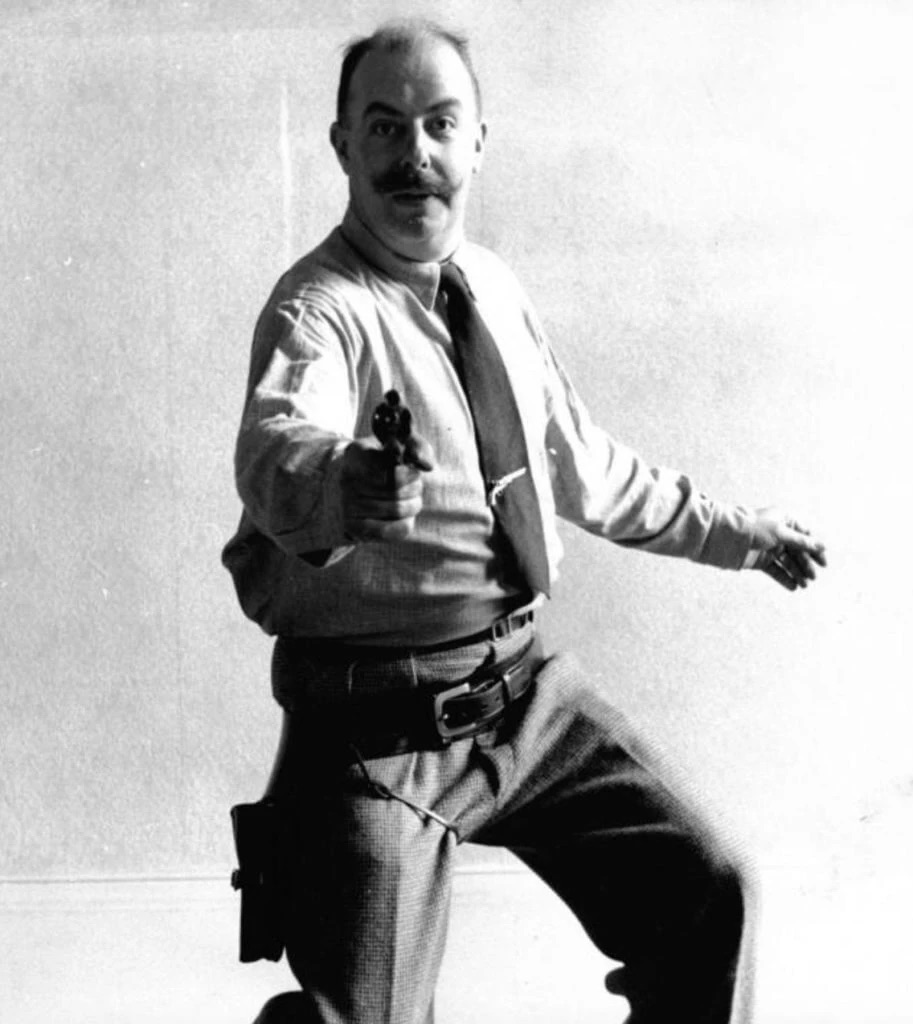
Geoffrey Boothroyd (1925 – 20 October 2001) enjoyed reading spy novels and writing about guns in over a dozen books on the subject, including A Guide to Gun Collecting (1961), Guns Through the Ages (also 1961) and The British Over and Under Shotgun. In 1956 Boothoyd had read about Ian Fleming’s heroic James Bond in Casino Royale (1953) and thought that by rights Bond should be long dead. Troubled by “certain inaccuracies” in the books, he wrote to Fleming, observing:
“‘I don’t think Bond was going to last very long if he used a 25 Beretta pistol…”
In equipping Bond with a .25 calibre Beretta M418 and housing in in suede holster at shoulder height – so as not to spoil the lines of Bond’s suit but making it impossible for 007 to be quick on the draw because it was tricky to reach and in reality would catch on the soft fabric – Fleming had placed the spy in grave danger. Boothroyd told Fleming:
“I have, by now, got rather fond of Mr. James Bond. I like most of the things about him, with the exception of his rather deplorable taste in firearms. In particular, I dislike a man who comes into contact with all sorts of formidable people using a .25 Beretta. This sort of gun is really a lady’s gun, and not a really nice lady at that. If Mr. Bond has to use a light gun he would be better off with a .22 rim fire; the lead bullet would cause more shocking effect than the jacketed type of the .25.
“May I suggest that Mr. Bond be armed with a revolver?”
Ian Fleming appreciated Boothroyd’s advice, and wrote back:
KEMSLEY HOUSE, LONDON, W.C.1.
31st May, 1956
Dear Mr Boothroyd,
I really am most grateful for your splendid letter of May 23rd.
You have entirely convinced me and I propose, perhaps not in the next volume of James Bond’s memoirs but, in the subsequent one, to change his weapons in accordance with your instructions.
Since I am not in the habit of stealing another man’s expertise, I shall ask you in due course to accept remuneration for your most valuable technical aid.
Incidentally, can you suggest where I can see a .38 Airweight in London. Who would have one?
As a matter of interest, how do you come to know so much about these things? I was delighted with the photographs and greatly impressed by them. If ever there is talk of making films of some of James Bond’s stories in due course, I shall suggest to the company concerned that they might like to consult you on some technical aspects. But they may not take my advice, so please do not set too much store by this suggestion.
From the style of your writing it occurs to me that you may have written books or articles on these subjects. Is that so?
Bond has always admitted to me that the .25 Beretta was not a stopping gun, and he places much more reliance on his accuracy with it than in any particular qualities of the gun itself. As you know, one gets used to a gun and it may take some time for him to settle down with the Smith and Wesson. But I think M. should advise him to make a change; as also in the case of the .357 Magnum.
He also agrees to give a fair trial to the Bern Martin holster, but he is inclined to favour something a little more casual and less bulky. The well-worn chamois leather pouch under his left arm has become almost a part of his clothes and he will be loath to make a change though, here again, M. may intervene.
At the present moment Bond is particularly anxious for expertise on the weapons likely to be carried by Russian agents and I wonder if you have any information on this.
As Bond’s biographer I am most anxious to see that he lives as long as possible and I shall be most grateful for any further technical advices you might like me to pass on to him.
Again, with very sincere thanks for your extremely helpful and workmanlike letter.
Yours sincerely
(Signed)
IAN FLEMING
G. Boothroyd, Esq.,
17, Regent Park Square,
Glasgow, S

And so it was that for Bond fifth adventure in From Russia With Love (1957), the silencer on his Beretta became caught on his favourite chamois holster as he fought Rosa Klebb:
Bond twisted over, tugging at his gun. Out of the corner of his eye he noticed a curl of blue smoke coming from the mouth of the ‘telephone’. Then the woman was on him, the knitting needles glinting in her clenched fists.
She stabbed downwards at his legs. Bond lashed out with his feet and hurled her sideways. She had aimed at his legs! As he got to one knee, Bond knew what the coloured tips of the needles meant. It was poison. Probably one of those German nerve poisons. All she had to do was scratch him, even through his clothes.
Bond was on his feet. She was coming at him again. He tugged furiously at his gun. The silencer had caught. There was a flash of light. Bond dodged. One of the needles rattled against the wall behind him and the dreadful chunk of woman, the white bun of wig askew on her head, the slimy lips drawn back from her teeth, was on top of him.

Ian Fleming, British author and creator of James Bond, smoking with a cigarette holder. (Photo by Evening Standard/Getty Images)
In the next novel, Dr. No (1958), Bond was armed with a Walther PPK given to him by a certain Major Boothroyd, his new service armorer. The character would become the gadget-mad ‘Q’ in the Bond films. For good measure, Boothroyd helped design the three-quarter trigger guard pistol used on the cover of Fleming’s From Russia With Love.
Boothroyd told Fleming to take care with it:
“I have just had a visit from our local CID who wanted to know where my .38 pistol was. This interest is due to a very misguided character who slew two ladies and a girl on the outskirts of Glasgow on Sunday night using a .38 pistol. I told the two CID chaps that the pistol was in your possession. It is possible that the law may ask you if you have a firearms certificate. Anyone not having a certificate is liable to three months in clink, or a fine of £50, or both.”

Publicity still of Sean and Shirley in Goldfinger.
In the video below while filming Goldfinger at Pinewood Studios in 1963, Sean Connery talked about Bond’s weapon of choice, introducing Geoffrey Boothroyd, who explains the differences between the Beretta 418, the Walther PPK and Boothroyd’s preferred gun, the Magnum 44 — favoured by Clint Eastwood’s Dirty Harry.
We also hear Boothroyd explain his correspondence with Fleming:
“I said I didn’t think Bond was going to last very long if he used a .25 Beretta pistol, which is a ladies’ gun, and not a very nice lady at that, and used his chamois leather holster. I have a preference for a revolver, for the type of work secret agents, private eyes and the type of work they might be called upon to do… One of the reasons I prefer the revolver is because of the instant availability, without having to fiddle about with safety catches or anything else.”
Would you like to support Flashbak?
Please consider making a donation to our site. We don't want to rely on ads to bring you the best of visual culture. You can also support us by signing up to our Mailing List. And you can also follow us on Facebook, Instagram and Twitter. For great art and culture delivered to your door, visit our shop.



